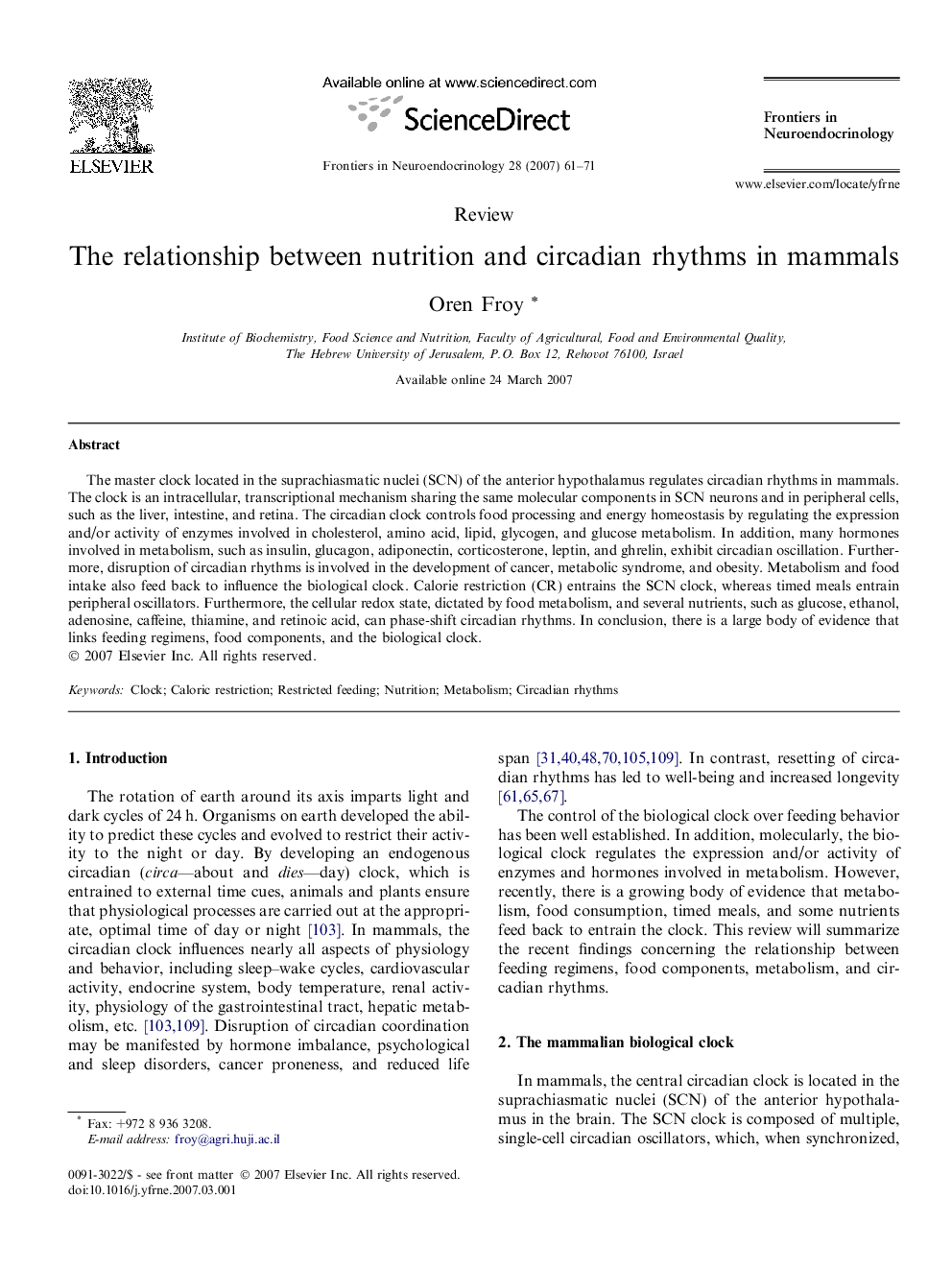| کد مقاله | کد نشریه | سال انتشار | مقاله انگلیسی | نسخه تمام متن |
|---|---|---|---|---|
| 2799533 | 1568829 | 2007 | 11 صفحه PDF | دانلود رایگان |

The master clock located in the suprachiasmatic nuclei (SCN) of the anterior hypothalamus regulates circadian rhythms in mammals. The clock is an intracellular, transcriptional mechanism sharing the same molecular components in SCN neurons and in peripheral cells, such as the liver, intestine, and retina. The circadian clock controls food processing and energy homeostasis by regulating the expression and/or activity of enzymes involved in cholesterol, amino acid, lipid, glycogen, and glucose metabolism. In addition, many hormones involved in metabolism, such as insulin, glucagon, adiponectin, corticosterone, leptin, and ghrelin, exhibit circadian oscillation. Furthermore, disruption of circadian rhythms is involved in the development of cancer, metabolic syndrome, and obesity. Metabolism and food intake also feed back to influence the biological clock. Calorie restriction (CR) entrains the SCN clock, whereas timed meals entrain peripheral oscillators. Furthermore, the cellular redox state, dictated by food metabolism, and several nutrients, such as glucose, ethanol, adenosine, caffeine, thiamine, and retinoic acid, can phase-shift circadian rhythms. In conclusion, there is a large body of evidence that links feeding regimens, food components, and the biological clock.
Journal: Frontiers in Neuroendocrinology - Volume 28, Issues 2–3, August–September 2007, Pages 61–71